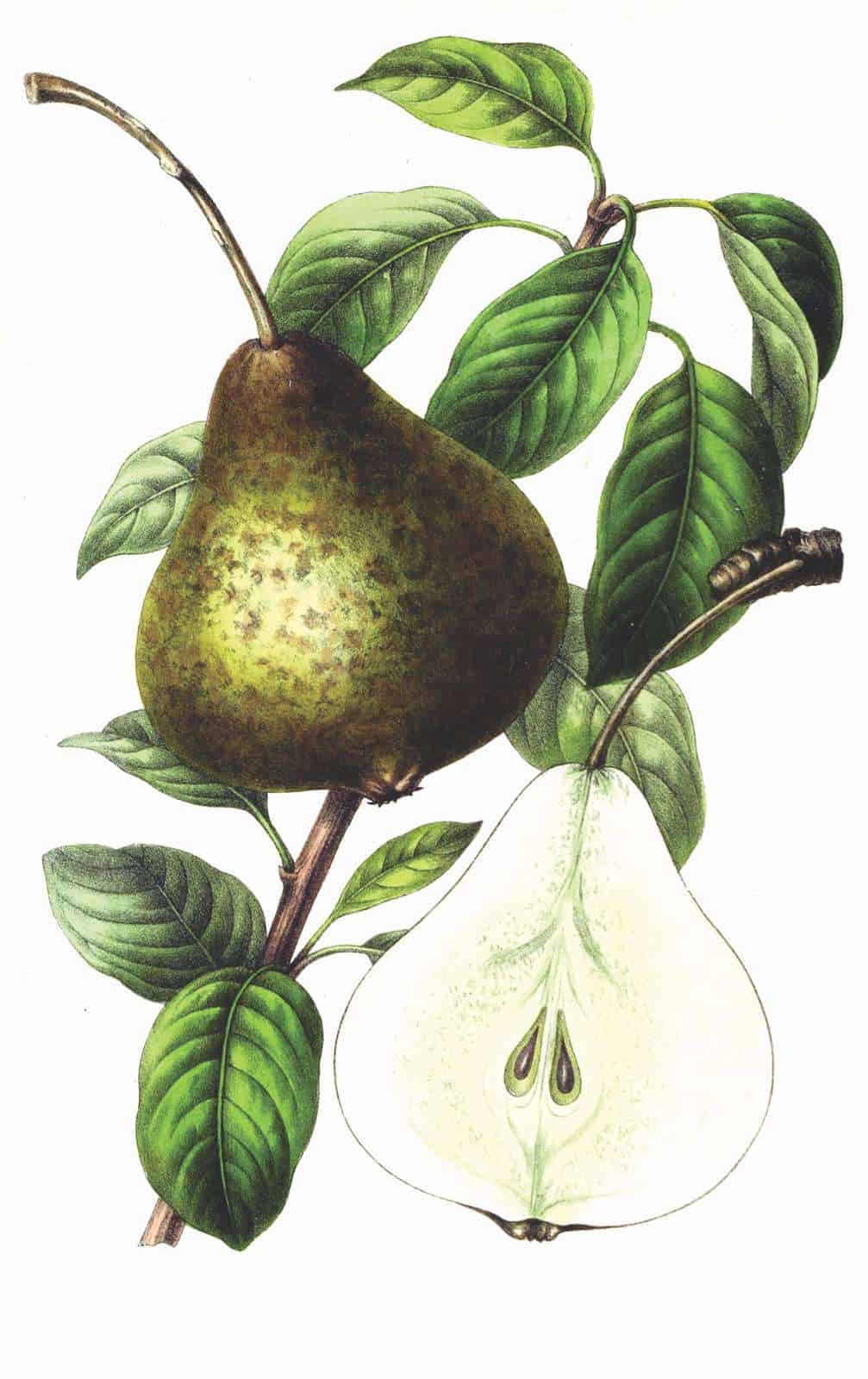
Close your eyes and imagine a pear. You’re probably envisioning a light green, almost yellow fruit with a large base that tapers towards the top: the Bartlett pear. This pale, golden-green varietal is available September through February and it’s a classic match with cheese—but more on that in a minute. First, we need to talk about etymology.
Discovered in 1765 by a school master in England named John Stair, the fruit originally took the name of its finder and was called the Stair’s Pear. The name was later changed by another English lad, this time a nurseryman named Williams. And thus, the Williams Pear (full name: Williams’ bon Chretien pear, or Williams’ “good Christian” pear) was renamed. By 1800, the dual-identity pear made its way to America and was planted on a Massachusetts estate that would later be owned by a man named Enoch Bartlett. Without knowing the pear’s fraught nomenclature, Bartlett cultivated and popularized the pear utilizing his own name.
It took two decades for folks to realize Williams and Bartlett pears were the same, but by then the name—er, names—had stuck. Today, Bartlett pears thrive in the northern United States (think: California, the Pacific Northwest, and Michigan) and account for 75 percent of all pears grown in the United States. Pear trees typically grow 15 to 20 feet tall and bloom early in the season (usually September), forming fruit just in time for fall. In order to produce a harvest, Bartlett pear trees must be planted near other European pear trees such as Bosc or Anjou for pollination. In 1938, some Bartlett trees in Washington state began spontaneously bearing red fruit, and growers ran with it. (Today the variety is known as the Red Bartlett or Max Red.) The two pears are identical in every way, save appearance, but the classic Bartlett remains the most popular.
Bartlett pears are best when picked underripe and allowed to ripen before eating. Look for firm, green Bartletts at the grocery store and leave them on your counter for a few days—once the pears have started to yellow, perhaps with a touch of red coming through, they’re ready for snacking. The Bartlett pear is also used to make Poire Williams eau de vie, a colorless fruit brandy typically served chilled as a post-dinner drink. (Poire is the French word for “pear.”) Some Poire Williams producers include an entire pear in each bottle by attaching the empty bottle to a budding pear tree and allowing the pear to grow inside the glass. Though relatively unknown in the US, Poire Williams has achieved high status in Europe with commercial brands like Williamine (produced in Switzerland by Distillerie Louis Morand), whose recipe is protected by an AOP—just like many cheeses we know and love.
If booze isn’t your thing, or you’re in the mood for something edible, you’re in luck: Bartlett pears are as versatile as they are delicious. Toss some slices in an autumnal salad along with walnuts, spinach, and balsamic vinaigrette, then top with shaved parmesan. If your Bartlett pears are on their way out (read: you forgot them in your fruit bowl and now they’re overripe), chop them up and cook them down with some sugar and lemon juice for easy Bartlett pear preserves. Add to a grilled cheese with grated Asiago or gooey brie and you’ll thank your past self for letting those Bartletts go bad. Or, ditch your usual avocado toast in favor of Bartlett Pear and Ricotta Toast (recipe below)—one bite and you won’t care what the pears are called, you’ll just want a never-ending supply.
Bartlett Pear and Ricotta Toast
Ingredients
- 1 cup ricotta cheese
- ½ teaspoon orange zest
- Pinch kosher salt
- 1 tablespoon honey plus more for drizzling
- 4 slices thick sourdough bread toasted
- 2 Bartlett pears halved and sliced thinly
Instructions
- ►Combine ricotta, orange zest, salt, and 1 tablespoon honey in a small bowl. Divide evenly and spread over slices of toast (about ¼ cup of ricotta mixture per slice). Top with pear slices and garnish with drizzle of honey.




